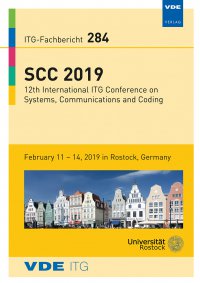Improving Ultra Wideband In-Body Communication Using Space Diversity
Konferenz: SCC 2019 - 12th International ITG Conference on Systems, Communications and Coding
11.02.2019 - 14.02.2019 in Rostock, Germany
doi:10.30420/454862027
Tagungsband: SCC 2019
Seiten: 6Sprache: EnglischTyp: PDF
Persönliche VDE-Mitglieder erhalten auf diesen Artikel 10% Rabatt
Autoren:
Brumm, Jan-Christoph; Kohagen, Joschua; Bauch, Gerhard (Hamburg University of Technology, Institute of Communications, Germany)
Inhalt:
For certain medical applications, e.g. capsule endoscopy, high resolution images need to be transmitted from the inside of the human body to an on-body receiver. Ultra wideband communication is widely considered a feasible alternative to increase the data rate compared to today’s available products operating with narrowband communication. Based on a channel model developed specifically for in-body communication in the ultra wideband frequency range, we simulate the bit error rate of a communication link utilizing ultra wideband pulse position modulation. First of all, the effect on the bit error rate depending on the position of one antenna is investigated. Furthermore, up to 5 receive antennas are placed on the skin and space diversity is exploited using different combining schemes, which are systematically compared. Results show that the placement of the receive antennas is much more important for a successful data transmission, than the choice of the combining scheme. Due to the high attenuation inside the body maximum ratio combining performs similar to selection combining.


